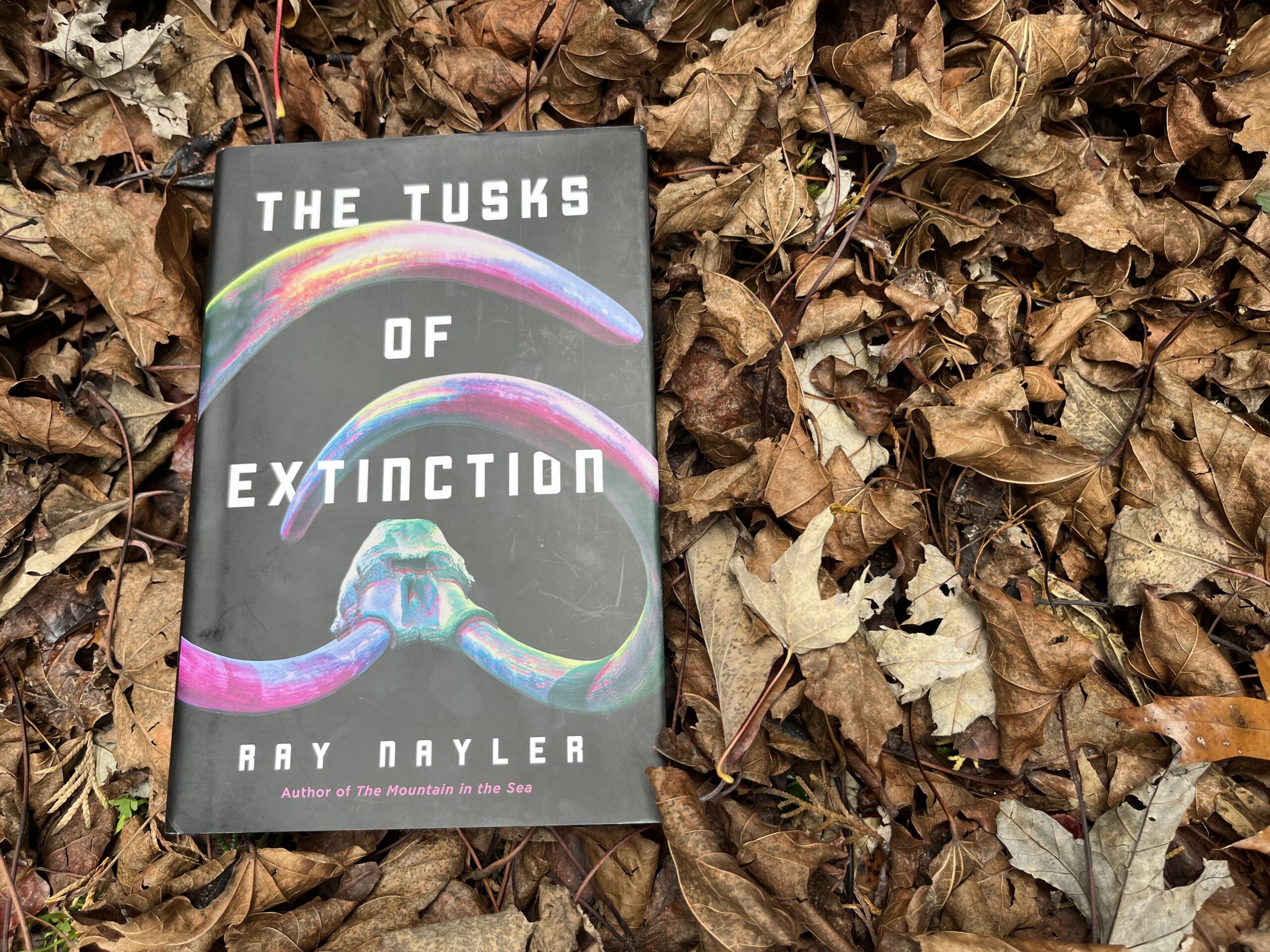As a casual sci-fi reader, I found the premise of Ray Nayler’s latest speculative novella, The Tusks of Extinction, off-putting: After her death defending the last elephants on earth, a scientist’s consciousness is uploaded into a resurrected woolly mammoth to teach the species how to survive. How could this story—despite winning the Hugo and being a finalist for the Nebula—possibly build this world credibly in 100 pages? And that title? So earnest. Come on. But ultimately I fell for the oldest trick in the book: a brilliant cover.
I’m so glad I did.
Despite being billed as a “tense sci-fi thriller,” The Tusks of Extinction turned out to be a beautifully meditative, multi-perspective White Lotus set in a Siberian Jurassic Park: the wealthy “saving” what they once destroyed and nature quietly plotting her revenge. I settled in right away.
In the not-so-distant future, the earth’s elephants are gone, victims of humanity’s insatiable appetite for ivory and indifference to extinction. Moscow’s controversial de-extinction program has brought woolly mammoths (among other creatures, such as the white rhino) back, cloning them from preserved DNA—not out of ecological altruism, but in a desperate attempt to restore the Siberian steppe and slow the thawing permafrost that threatens to release catastrophic amounts of greenhouse gases. Bringing them back turns out to be the easy part. The resurrected creatures are behavioral disasters—traumatized, confused, unable to form the complex social structures their species needs to thrive. Enter Dr. Damira Khismatullina, who spent her life studying elephant behavior and died trying to protect the last of them from poachers. Her digital consciousness, uploaded into a female mammoth, becomes the unlikely bridge between humanity’s scientific ambition and the mammoths’ survival.
Are there consequences when instinctually peaceful behemoths learn survival from a human? But of course. Damira moves through the world driven by competing impulses—her human memories, by turns tender and rage-filled, and the mammoth’s ancient instincts—neither fully her own. She becomes mother, mentor, and protector to a herd with no generational memory, no elders to teach them how to use their trunks to push aside the snow to find the grasses beneath, or how to push young males out of the herd when the time is right. The threats they face aren’t just existential—they’re immediate and brutal. Poachers, driven by desperation and backed by the invisible appetites of the ultra-wealthy, stalk the tundra in search of mammoth tusks—the ultimate commodity and most valuable substance on earth. Nayler doesn’t flinch from the violence: the attacks on mammoths and humans alike are visceral reminders that humanity’s relationship with megafauna has always been defined by exploitation. In this world, extinction itself has become a luxury product, and survival a privilege only money can buy.
I started The Tusks of Extinction expecting slick sci-fi gimmickry and instead found something beautiful and ambitious. Nayler moves fluidly among perspectives—a scientist reborn in fur and fury, a poor young poacher caught in the machinery of survival, a protective billionaire husband chasing transcendence through plunder—each one reveals a new layer of complicity and empathy. Nayler’s research runs deep but is never showy. Instead, you just feel its weight in the zoology and the ache of realism underneath the desperate push for conservation. In barely a hundred pages, Nayler manages what most sprawling epics don’t—a story as tight as a fossil and as alive as the memory it echoes.




